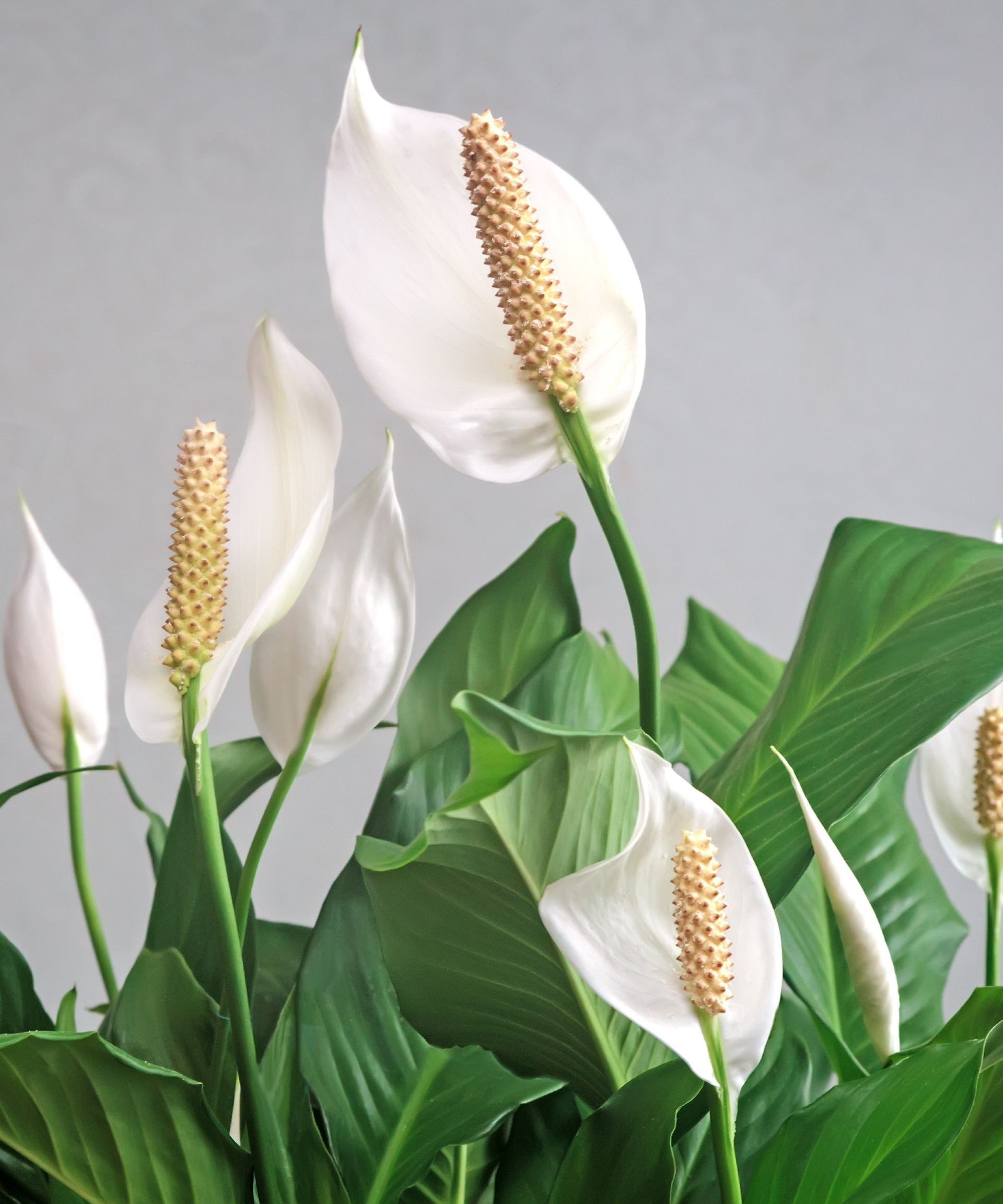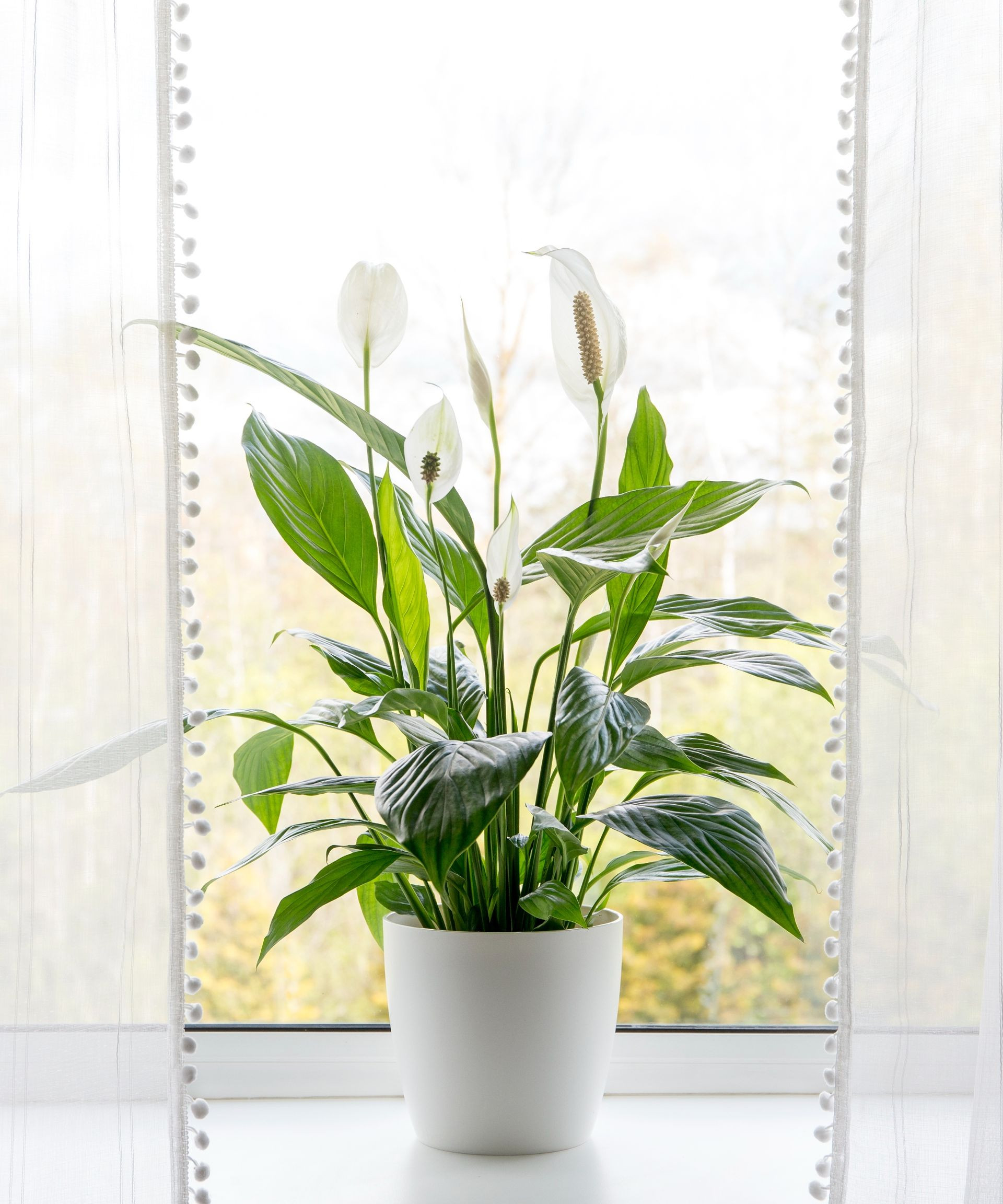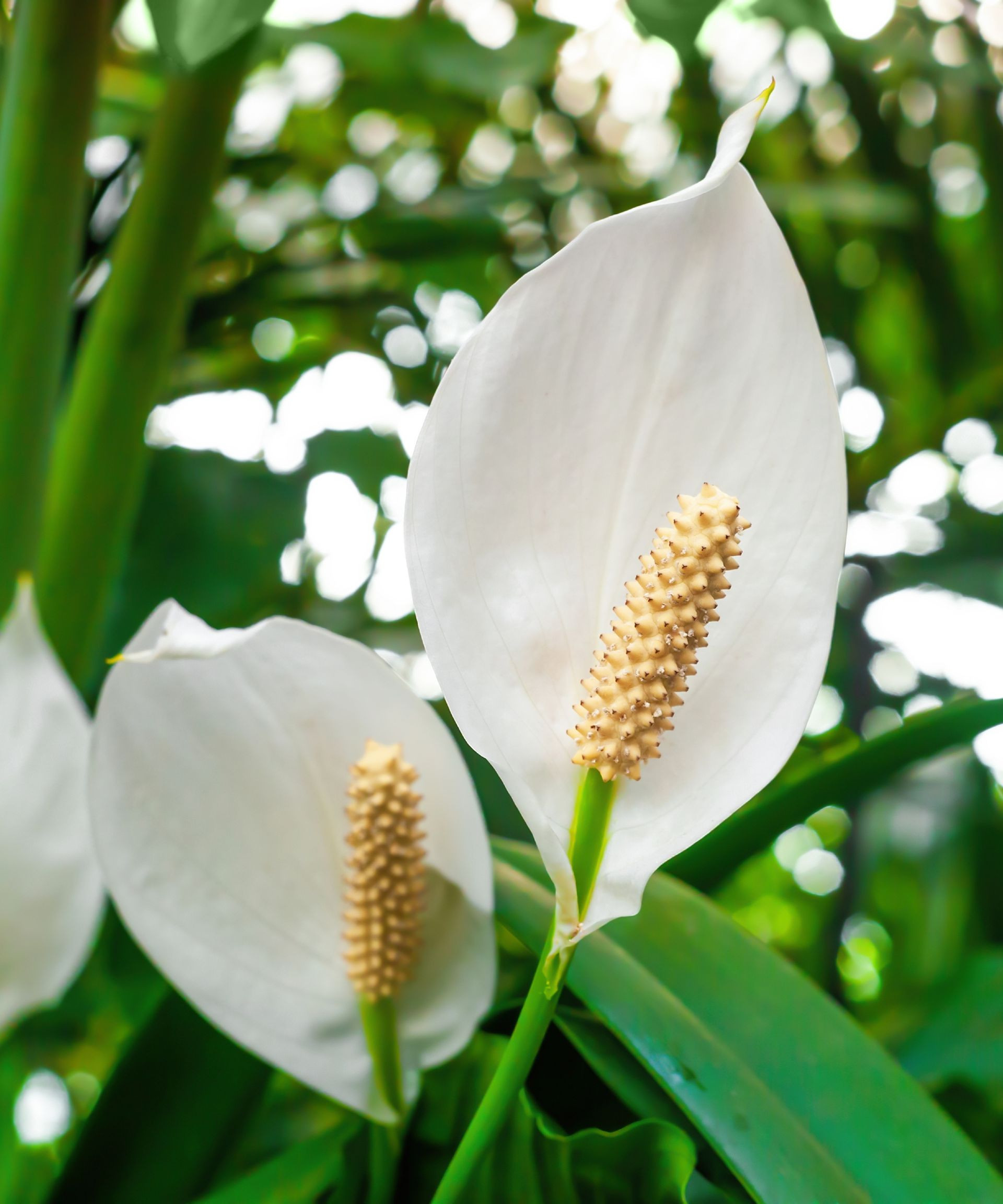Is your peace lily looking a little sad? Don’t worry, you’re not alone. Many plant lovers encounter the dreaded droop. At savewhere.net, we understand the importance of a thriving indoor garden, and we’re here to help you bring your peace lily back to life. With the right approach to plant resuscitation and a little attention, you can reverse plant lethargy and restore its vibrant beauty.
1. Assessing the Peace Lily’s Condition
Before diving into solutions, it’s crucial to understand what’s causing your peace lily to droop. Is it dehydrated, receiving too much sunlight, or suffering from a nutrient deficiency? Identifying the root cause is the first step to successful resuscitation.
1.1. Is Your Peace Lily Dehydrated?
Dehydration is a common culprit behind a drooping peace lily. How do you know if your plant is thirsty?
- Check the soil: If the top inch of soil feels dry to the touch, it’s likely time for a drink.
- Look at the leaves: Drooping leaves are a telltale sign of underwatering.
- Consider the pot’s weight: A dry pot will feel significantly lighter than a well-hydrated one.
1.2. Overwatering: A Silent Killer
While underwatering is common, overwatering can be just as detrimental. Soggy soil deprives the roots of oxygen, leading to root rot and, ultimately, a drooping plant.
- Check for soggy soil: If the soil is consistently wet, even at the bottom of the pot, you’re likely overwatering.
- Look for yellowing leaves: Yellow leaves, especially those that are soft and mushy, can indicate overwatering.
- Smell the soil: A foul odor emanating from the soil is a sign of root rot.
1.3. Is There Enough Sunlight?
Peace lilies thrive in bright, indirect light. Too much direct sunlight can scorch the leaves, while too little light can weaken the plant and cause it to droop.
- Observe the leaf color: Burnt or bleached leaves indicate too much direct sunlight.
- Assess the plant’s growth: Slow or stunted growth can be a sign of insufficient light.
1.4. Identifying Nutrient Deficiencies
Like all living things, peace lilies need nutrients to thrive. A lack of essential nutrients can lead to a variety of problems, including drooping leaves.
- Look for yellowing leaves with green veins: This can indicate an iron deficiency.
- Check for stunted growth: A lack of nutrients can hinder the plant’s ability to grow.
2. Reviving Your Drooping Peace Lily: A Step-by-Step Guide
Once you’ve identified the cause of your peace lily’s droop, it’s time to take action. Follow these steps to bring your plant back to life.
2.1. Watering Techniques
Proper watering is essential for a healthy peace lily. Here’s how to get it right:
- Water thoroughly: When the top inch of soil feels dry, water the plant until water drains out of the bottom of the pot.
- Use room-temperature water: Cold water can shock the plant’s roots.
- Avoid overwatering: Allow the soil to dry out slightly between waterings.
2.2. Adjusting the Light Exposure
Finding the right balance of light is crucial for a thriving peace lily.
- Move the plant: If it’s in direct sunlight, move it to a spot with bright, indirect light.
- Consider a grow light: If you don’t have enough natural light, a grow light can provide the necessary illumination.
2.3. Fertilizing Your Peace Lily
Give your peace lily a boost of nutrients with a balanced fertilizer.
- Use a liquid fertilizer: Dilute the fertilizer according to the package directions and apply it to the soil during watering.
- Fertilize sparingly: Over-fertilizing can damage the plant’s roots. Fertilize every 4-6 weeks during the growing season (spring and summer).
2.4. Addressing Root Rot
If you suspect root rot, take immediate action.
- Remove the plant from its pot: Gently remove the plant from its pot and inspect the roots.
- Trim away affected roots: Use clean, sterilized scissors to remove any brown or mushy roots.
- Repot the plant: Repot the plant in fresh, well-draining potting mix.
 Peace Lily
Peace Lily
2.5. Increasing Humidity
Peace lilies thrive in humid environments. If your home is dry, consider these options:
- Mist the leaves: Mist the leaves regularly with water.
- Use a humidifier: A humidifier can increase the humidity in the room.
- Place the plant on a pebble tray: Fill a tray with pebbles and water, and place the plant on top. As the water evaporates, it will increase the humidity around the plant.
2.6. Pruning Dead Leaves
Remove any dead or dying leaves to encourage new growth.
- Use clean, sterilized scissors: This will prevent the spread of disease.
- Cut the leaves at the base: Cut the leaves as close to the soil as possible.
2.7. Repotting Your Peace Lily
Repotting can provide your peace lily with fresh soil and more room to grow.
- Choose a pot that’s slightly larger: Select a pot that’s only slightly larger than the current one.
- Use well-draining potting mix: A mix of peat moss, perlite, and vermiculite is ideal.
- Repot in the spring: This will give the plant plenty of time to adjust before the growing season.
3. Understanding the Needs of a Peace Lily
To keep your peace lily thriving, it’s essential to understand its specific needs. Here’s a detailed look at the key factors:
3.1. Optimal Lighting
Peace lilies prefer bright, indirect light. They can tolerate low light conditions, but they won’t bloom as readily.
- North-facing windows: These windows typically provide the ideal amount of indirect light.
- East-facing windows: These windows offer gentle morning sun, which is beneficial for peace lilies.
- West-facing windows: These windows can provide too much intense afternoon sun, so be sure to shield the plant with a sheer curtain.
- South-facing windows: These windows offer the most intense sunlight, so keep the plant away from the window or use a sheer curtain.
3.2. Ideal Temperature and Humidity
Peace lilies thrive in temperatures between 65°F and 80°F (18°C and 27°C). They also prefer high humidity levels.
- Avoid drafts: Keep the plant away from cold drafts, which can damage the leaves.
- Maintain humidity: Use a humidifier, mist the leaves, or place the plant on a pebble tray.
3.3. Soil Requirements
Peace lilies need well-draining soil that retains moisture.
- Use a potting mix specifically for peace lilies: These mixes are typically made up of peat moss, perlite, and vermiculite.
- Avoid heavy soils: Heavy soils can retain too much water and lead to root rot.
3.4. Watering Frequency
Water your peace lily when the top inch of soil feels dry to the touch.
- Check the soil regularly: Don’t let the soil dry out completely.
- Adjust watering based on the season: Water more frequently during the growing season (spring and summer) and less frequently during the dormant season (fall and winter).
3.5. Fertilizing Schedule
Fertilize your peace lily every 4-6 weeks during the growing season with a balanced liquid fertilizer.
- Dilute the fertilizer according to the package directions: Over-fertilizing can damage the plant’s roots.
- Avoid fertilizing during the dormant season: The plant doesn’t need as many nutrients during this time.
4. Common Peace Lily Problems and Solutions
Even with the best care, peace lilies can sometimes encounter problems. Here’s a rundown of common issues and how to address them:
4.1. Brown Leaf Tips
Brown leaf tips are often caused by dry air or inconsistent watering.
- Increase humidity: Mist the leaves, use a humidifier, or place the plant on a pebble tray.
- Water consistently: Don’t let the soil dry out completely between waterings.
4.2. Yellowing Leaves
Yellowing leaves can be a sign of overwatering, underwatering, or nutrient deficiencies.
- Check the soil moisture: Adjust your watering schedule accordingly.
- Fertilize the plant: Provide the plant with a balanced liquid fertilizer.
4.3. Lack of Blooms
If your peace lily isn’t blooming, it may not be getting enough light or nutrients.
- Move the plant to a brighter location: Provide the plant with bright, indirect light.
- Fertilize the plant: Use a fertilizer that’s specifically formulated for blooming plants.
4.4. Pests
Peace lilies can be susceptible to pests like spider mites, mealybugs, and aphids.
- Inspect the plant regularly: Look for signs of pests, such as webbing, sticky residue, or small insects.
- Treat infestations promptly: Use insecticidal soap or neem oil to get rid of pests.
 Peace Lily
Peace Lily
5. The Benefits of Owning a Peace Lily
Beyond their aesthetic appeal, peace lilies offer several benefits:
- Air purification: Peace lilies are known for their ability to remove toxins from the air, such as formaldehyde, benzene, and trichloroethylene. According to a NASA study, peace lilies are among the top plants for air purification.
- Increased humidity: Peace lilies release moisture into the air, which can help to increase humidity levels and reduce dry skin and respiratory problems.
- Stress reduction: Studies have shown that being around plants can help to reduce stress and improve mood.
- Easy care: Peace lilies are relatively easy to care for, making them a great choice for beginner plant owners.
6. Peace Lily Varieties
While the most common peace lily variety is Spathiphyllum wallisii, there are several other cultivars to choose from:
- Spathiphyllum ‘Domino’: This variety has variegated leaves with white speckles.
- Spathiphyllum ‘Mauna Loa’: This variety is larger than the common peace lily and produces large, white blooms.
- Spathiphyllum ‘Sensation’: This variety is the largest peace lily cultivar and can grow up to 6 feet tall.
7. Peace Lily FAQs
Let’s tackle some common questions about peace lilies:
7.1. How often should I water my peace lily?
Water when the top inch of soil feels dry.
7.2. What kind of light does a peace lily need?
Peace lilies prefer bright, indirect light.
7.3. How do I fertilize my peace lily?
Fertilize every 4-6 weeks during the growing season with a balanced liquid fertilizer.
7.4. Why are the leaves of my peace lily turning yellow?
Yellowing leaves can be a sign of overwatering, underwatering, or nutrient deficiencies.
7.5. How do I get my peace lily to bloom?
Provide the plant with bright, indirect light and fertilize with a fertilizer that’s specifically formulated for blooming plants.
7.6. How do I get rid of pests on my peace lily?
Use insecticidal soap or neem oil to treat pest infestations.
7.7. Is peace lily safe for pets?
Peace lilies are toxic to pets if ingested. Keep them out of reach of cats and dogs. According to the American Society for the Prevention of Cruelty to Animals (ASPCA), peace lilies contain calcium oxalate crystals, which can cause oral irritation, excessive drooling, and vomiting if ingested.
7.8. How long do peace lily flowers last?
Peace lily flowers can last for several weeks.
7.9. What does a peace lily symbolize?
Peace lilies symbolize peace, purity, and sympathy.
7.10. How do I propagate a peace lily?
Peace lilies can be propagated by division.
8. The Symbolism and Cultural Significance of Peace Lilies
Peace lilies are more than just attractive houseplants; they carry significant symbolism in various cultures:
- Peace and Harmony: The most prominent symbolism is peace, making them a popular gift for expressing condolences or wishing someone tranquility.
- Purity and Innocence: The white blooms represent purity and innocence, often associated with new beginnings and spiritual cleansing.
- Sympathy and Healing: Peace lilies are commonly given as sympathy gifts to offer comfort and support during times of grief.
- Prosperity and Good Fortune: In some cultures, peace lilies are believed to bring prosperity and good fortune to the household.
9. Advanced Peace Lily Care Techniques
For those who want to take their peace lily care to the next level, here are some advanced techniques:
9.1. Hydroponic Growing
Growing peace lilies hydroponically can be an interesting experiment.
- Choose a suitable container: Use a container that doesn’t have drainage holes.
- Use a hydroponic nutrient solution: Follow the instructions on the package.
- Provide adequate light: Ensure the plant receives adequate light, either natural or artificial.
9.2. Air Layering
Air layering is a method of propagating plants while they’re still attached to the parent plant.
- Select a healthy stem: Choose a healthy stem with several leaves.
- Make a small cut: Make a small cut in the stem and wrap it with moist sphagnum moss.
- Cover with plastic wrap: Cover the moss with plastic wrap to retain moisture.
- Wait for roots to develop: Once roots have developed, cut the stem below the roots and pot the new plant.
 Peace Lily
Peace Lily
10. Savewhere.net: Your Partner in Peace Lily Care
At savewhere.net, we’re passionate about helping you create a thriving indoor garden. We offer a wealth of resources and information to help you care for your peace lily and other houseplants.
10.1. Explore Our Resources
Visit our website to discover:
- Detailed care guides: Learn everything you need to know about caring for your peace lily.
- Troubleshooting tips: Find solutions to common peace lily problems.
- Product reviews: Get recommendations on the best products for your plants.
10.2. Join Our Community
Connect with other plant lovers in our online community. Share your experiences, ask questions, and get advice from experts.
10.3. Contact Us
Have questions or need help with your peace lily? Contact us today. Our team of experts is here to assist you.
Address: 100 Peachtree St NW, Atlanta, GA 30303, United States.
Phone: +1 (404) 656-2000.
Website: savewhere.net.
A drooping peace lily can be disheartening, but with the right care and attention, you can bring it back to life. By understanding the plant’s needs and following our step-by-step guide, you can restore your peace lily to its former glory. And remember, savewhere.net is here to support you every step of the way. Explore our website for more tips and resources on plant care, home improvement, and sustainable living. Join our community and connect with other plant enthusiasts, and let’s create a greener, more beautiful world together. Start your journey to a thriving indoor garden with savewhere.net today.
